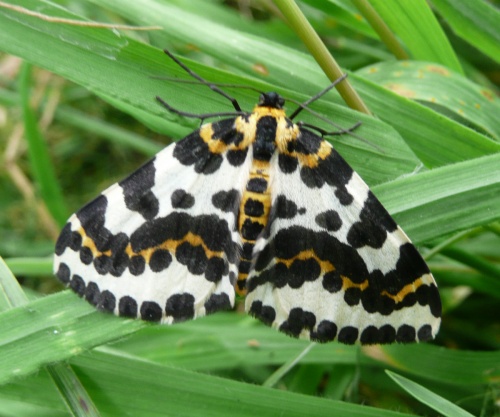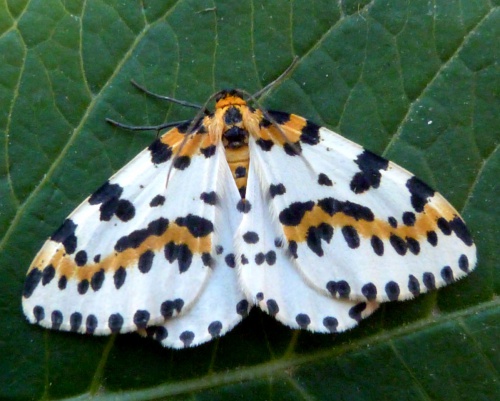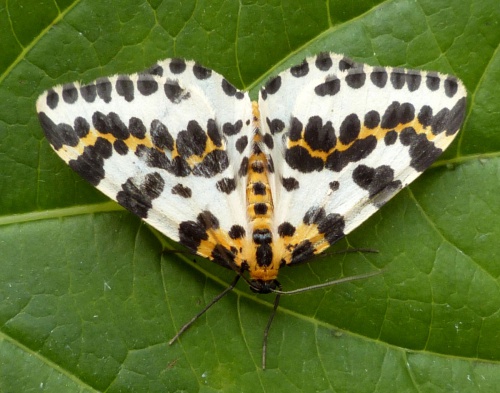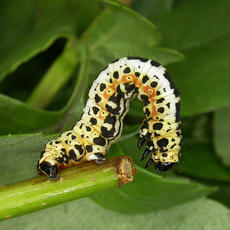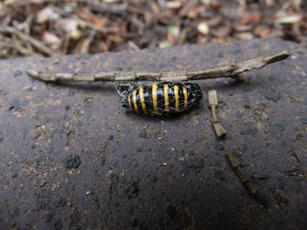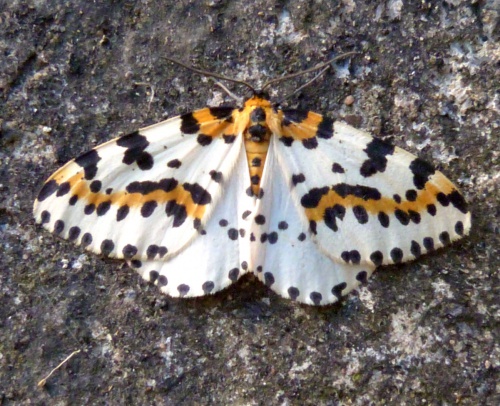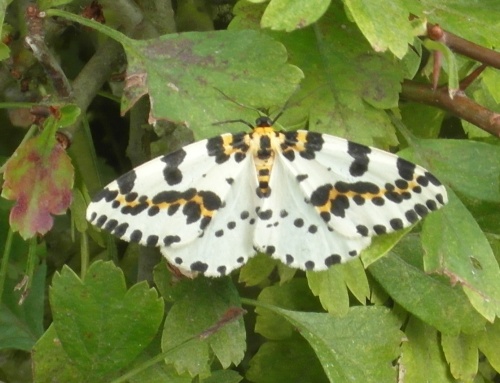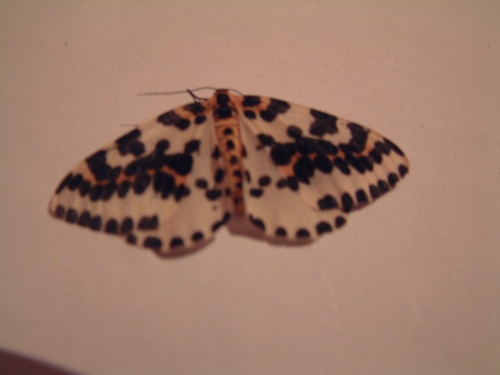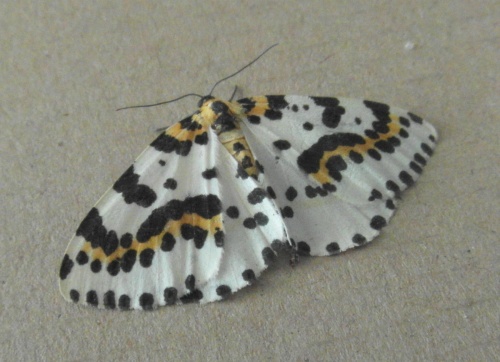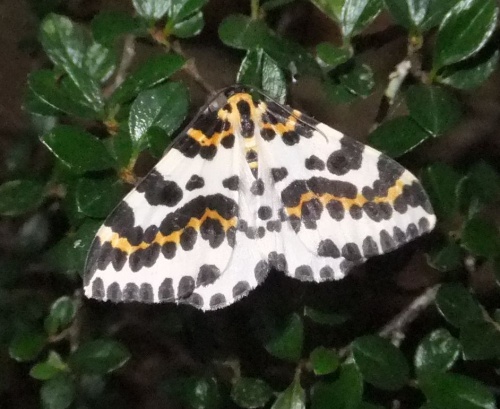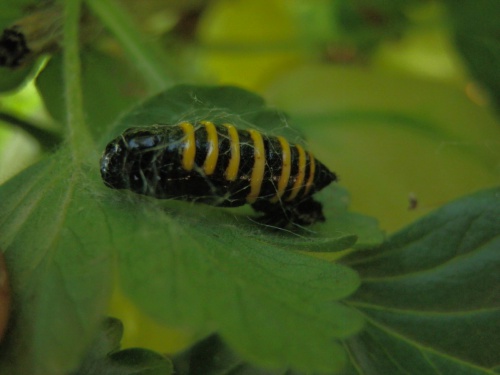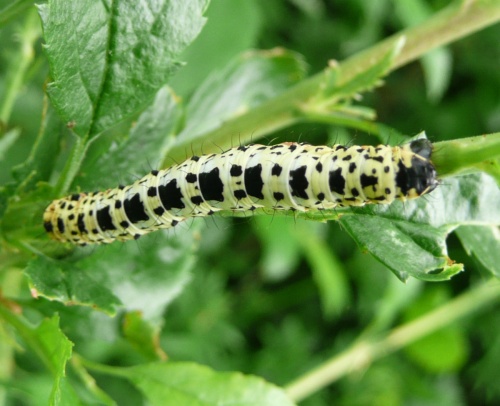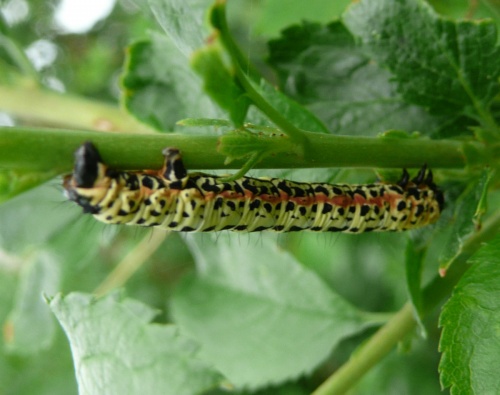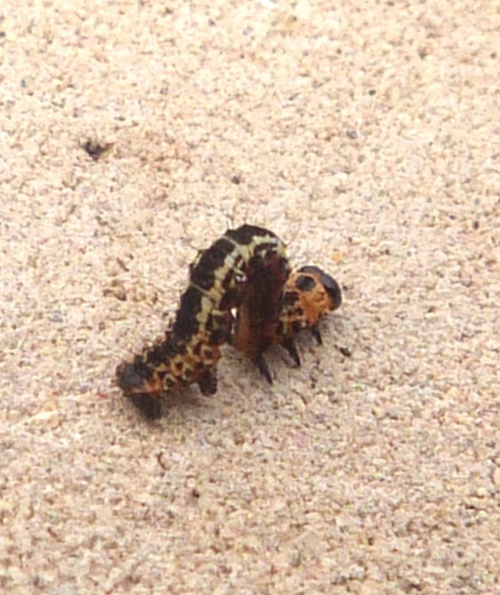The Magpie - Abraxas grossulariata
Wingspan 35-40 mm. A very distinctive species, this was a favourite with early collectors, who used to breed it to obtain unusual coloured and patterned forms.
Parks and gardens.
The moths fly in July and August and are regularly attracted to light.
The caterpillar, which has similar colouration to the moth, feeds on Currant and Gooseberry bushes in particular, and used to be seen as a garden pest, though the species is now declining in many areas.
Quite common in most of Britain, though less so in Scotland. In a recent survey to determine the status of all macro moths in Britain this species was classified as common.
Fairly common in Leicestershire and Rutland, but possibly declining throughout its range. L&R Moth Group status = A (common and resident)
Leicestershire & Rutland Map
Enter a town or village to see local records
MAP KEY:
Yellow squares = NBN records (all known data)
Coloured circles = NatureSpot records: 2020+ | 2015-2019 | pre-2015
UK Map
Species profile
- Common names
- Magpie Moth
- Species group:
- Moths
- Kingdom:
- Animalia
- Order:
- Lepidoptera
- Family:
- Geometridae
- Records on NatureSpot:
- 278
- First record:
- 08/07/1948 (Wesley, Isaac)
- Last record:
- 10/08/2023 (Edwards, Jo)
Total records by month
% of records within its species group
10km squares with records
The latest images and records displayed below include those awaiting verification checks so we cannot guarantee that every identification is correct. Once accepted, the record displays a green tick.
In the Latest Records section, click on the header to sort A-Z, and again to sort Z-A. Use the header boxes to filter the list.


